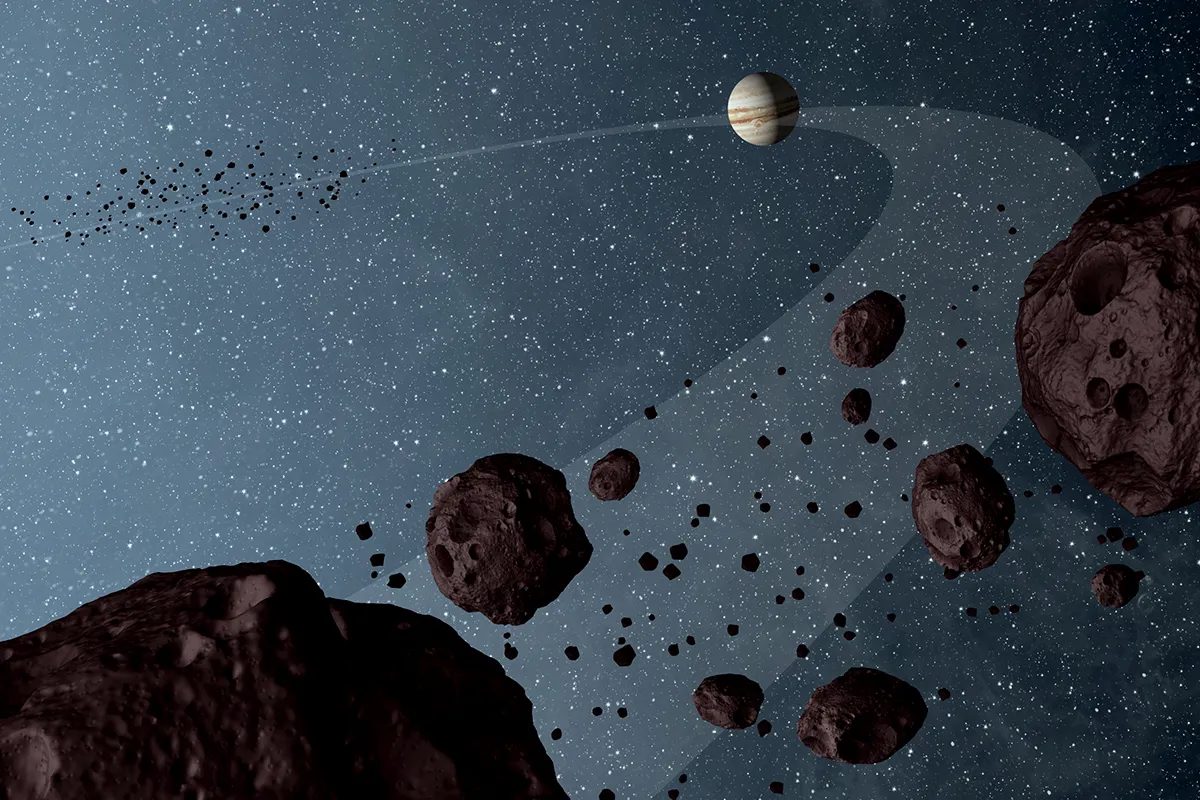Astronomers have discovered strong evidence of two planets sharing the same orbit around a star.
A new study reveals the detection of a cloud of debris sharing another planet's orbit.
This could be the building blocks of a new planet, or the remnants of one already formed.
If confirmed, it would be the first time that the 'sibling' of a planet orbiting a distant star has ever been seen.

The discovery adds further evidence to the existence of so-called Trojan planets, or co-orbital planets, which is when pairs of planets of similar mass share the same orbit around their host star.
A similar example can be found in our own Solar System in the Trojan asteroids of Jupiter, which are more than 12,000 rocky bodies that share Jupiter's orbit around our Sun.
But finding a Trojan planet has so far proven difficult.

A team of astronomers using the Atacama Large Millimeter/submillimeter Array (ALMA) in the Atacama Desert of Chile observed the PDS 70 system, which is a star 400 lightyears away known to host two Jupiter-like planets called PDS 70b and PDS 70c.
They spotted a cloud of debris at the location in PDS 70b’s orbit where Trojans are thought to exist.
Studying the Lagrangian zones - regions in a planet's orbit where gravitational equilibrium between the planet and host star can trap cosmic material - around PDS 70's orbit, the astronomers found evidence of a cloud of debris.
That debris has a mass up to about twice that of Earth's Moon, and may well be evidence of a Trojan planet sharing the same orbit around the host star.
"Who could imagine two worlds that share the duration of the year and the habitability conditions? Our work is the first evidence that this kind of world could exist," says Olga Balsalobre-Ruza, a student at the Centre for Astrobiology in Madrid, Spain, and led author of a paper published in Astronomy & Astrophysics.
"We can imagine that a planet can share its orbit with thousands of asteroids as in the case of Jupiter, but it is mind blowing to me that planets could share the same orbit."
“Our research is a first step to look for co-orbital planets very early in their formation,” says co-author Nuria Huélamo, a senior researcher at the Centre for Astrobiology.
"It opens up new questions on the formation of Trojans, how they evolve and how frequent they are in different planetary systems,” says Itziar De Gregorio-Monsalvo, ESO Head of the Office for Science in Chile, who also contributed to this research.
The team now plans to wait until after 2026, when they will go back to ALMA and observe whether PDS 70b and its 'sibling' cloud of debris move together around the host star.
Read the full paper Tentative co-orbital submillimeter emission within the Lagrangian region L5 of the protoplanet PDS 70 b (PDF)

